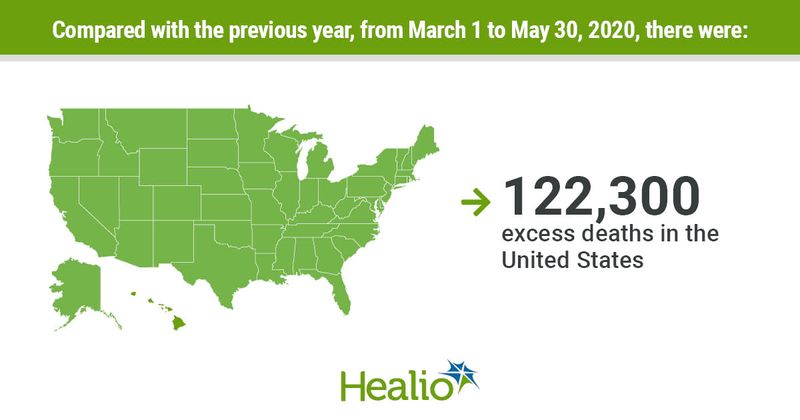Study suggests official COVID-19 death counts failed to show pandemic’s ‘true burden’
Click Here to Manage Email Alerts
The total number of excess deaths in the United States in the early months of the COVID-19 pandemic was 28% higher than the number of deaths officially attributed to the virus during that time, according to a study published in JAMA Internal Medicine.
“The number of reported COVID-19 deaths likely represents an undercount of the true burden caused by the virus,” Daniel M. Weinberger, PhD, associate professor of epidemiology at the Yale School of Public Health, told Healio Primary Care. “There have been questions about whether the reported statistics overcount COVID-19 deaths. Our analyses suggest the opposite.”

Weinberger and colleagues wrote that while some experts have expressed concern that deaths from illnesses other than COVID-19 may have mistakenly been attributed to the virus, others feared that because of limited testing early in the pandemic, many deaths may not have been properly attributed to COVID-19.
Researchers conducted an observational study of data collected from the National Center for Health Statistics on deaths attributed to pneumonia, influenza and COVID-19 and death from all causes from March 1 through May 30. They compared deaths during this time in 2020 to deaths during the same period in previous years.
According to the researchers, there were 781,000 total deaths from March through May — 122,300 more deaths (95% prediction interval [PI], 116,800-127,000) than would typically be expected during that time of year, they said.
Weinberger and colleagues found that during that time, 95,235 deaths were officially attributed to COVID-19, meaning the total number of excess all-cause deaths they identified was 28% higher than the official count of COVID-19 deaths.
According to the researchers, there was also variability among states and regions in their official COVID-19 death counts and the estimated burden from excess deaths. For instance, in New York City, there was a seven-fold increase in all-cause mortality at the peak of the COVID-19 pandemic, with 25,100 (95% PI, 24,800-25,400) excess deaths compared with previous years — 26% of which were not attributed to COVID-19. Meanwhile, in the rest of the state, there was a two-fold increase in excess deaths, with a total of 12,300 (95% PI, 11,900-12,700) excess deaths at the state’s peak.
The researchers noted that a potential reason for the higher number of excess deaths may be that in some states, excess deaths began to occur prior to the widespread availability of COVID-19 diagnostic tests and were therefore not counted among official COVID-19 deaths.
Researchers explained that even in areas with access to testing, deaths resulting from COVID-19 or similar infections may have been missed if they occurred indirectly through a secondary bacterial infection or by exacerbated comorbidities. Additionally, researchers noted that forgoing health care due to lockdown measures may also have led to excess mortalities that were not properly attributed to COVID-19.
“Determining the cause of death is an art and is influenced by a number of factors including state guidelines and availability of testing,” Weinberger said. “Looking at changes in deaths due to any cause provides a more complete picture of the epidemic. It also makes it easier to compare across states and between countries, where guidelines for coding deaths and availability of testing can differ.”

